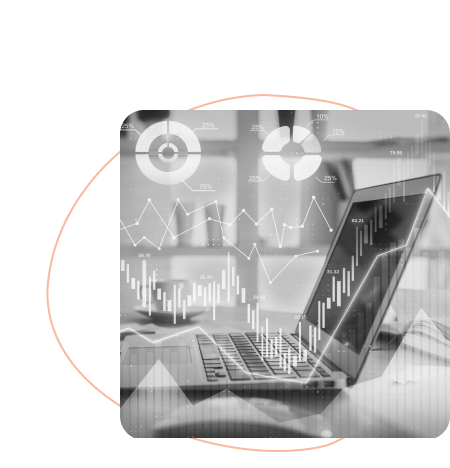
Migrating to a cloud ERP is like moving to a new house. Sure, it’s a big task, but with the right prep, it’s an upgrade that opens up all kinds of new possibilities. A successful cloud ERP migration will supercharge your business with flexibility, cost savings, and real-time data. In this guide, we’ll break down the steps to make your cloud migration project as smooth as possible—without tearing your hair out.
Why Bother With a Cloud ERP Migration?
Shifting to a cloud-based ERP might feel like a big leap, but the rewards are game-changing. Think of it as upgrading from a flip phone to a smartphone. A cloud ERP offers more flexibility, reduces operational costs, and gives you instant access to data—anytime, anywhere.
- Scalability: As your business grows, so does your cloud ERP. Add or remove features without fuss, and enjoy hassle-free scaling.
- Cost Efficiency: Kiss hardware maintenance costs goodbye, and get ready to cut down on IT headaches.
- Real-Time Data: No more waiting for the end of the month to know where you stand—get up-to-the-minute data that boosts your decision-making.
- Security That Doesn’t Slack: Cloud ERPs come with advanced, built-in security that keeps your data safe—it’s like having a security guard who never sleeps.
Now, let’s dig into the steps to make your cloud ERP migration as smooth as silk.
1. Assess Your Current System—The Good, the Bad, and the Ugly
Start by giving your current system a once-over. What’s working? What’s making your team sigh every Monday morning? This assessment is crucial to understanding the gaps and pain points in your current ERP setup.
Key Considerations:
- Take inventory of workflows and processes that need improvement.
- Identify pain points that slow your team down.
- Focus on the data and features you can’t live without in your new cloud ERP.
IMPACT: A THOROUGH ASSESSMENT LAYS THE GROUNDWORK FOR A CLOUD ERP THAT SUITS YOUR BUSINESS LIKE A CUSTOM-TAILORED SUIT—NO MORE WRANGLING WITH CLUNKY FEATURES YOU DON’T NEED.
2. Define Your Goals—Dream Big, Then Get Real
Once you’ve got a clear picture of what’s lacking, define your goals. What do you want your shiny new cloud ERP to do? Whether it’s reducing manual tasks or giving the sales team better visibility, spell out your objectives.
Key Considerations:
- Pin down the business challenges you’re solving.
- List must-have features (like advanced reporting or mobile access).
- Define success metrics to measure the post-migration impact.
IMPACT: SETTING CLEAR GOALS HELPS YOU STAY FOCUSED DURING THE MIGRATION AND ENSURES YOU’RE INVESTING IN A SYSTEM THAT MOVES THE NEEDLE FOR YOUR BUSINESS.
3. Choose the Right Cloud ERP Solution
Now, it’s time to find your ERP match. Not all cloud ERPs are created equal, so it’s vital to pick one that aligns with your goals and has a track record of success in your industry. Acumatica, for example, is a go-to choice for its intuitive design and adaptability to complex needs.
Key Considerations:
- Does it support your industry-specific needs?
- How does it handle integration with your existing tools?
- What are the long-term costs?
IMPACT: PICKING THE RIGHT CLOUD ERP HELPS YOU AVOID NASTY SURPRISES DOWN THE ROAD AND ENSURES YOU’RE GETTING A TOOL THAT’S AS FLEXIBLE AND SCALABLE AS YOUR BUSINESS NEEDS IT TO BE.
4. Develop a Migration Plan
A solid migration plan is the secret to staying sane. Lay out your timeline, set a budget, and decide who’s steering the ship. Clean data migration should be a top priority—like packing your valuables before a move.
Key Steps:
- Create a realistic timeline with clear milestones.
- Map out potential risks (and how you’ll dodge them).
- Set up a strategy for cleaning up and organizing data.
IMPACT: A DETAILED PLAN MINIMIZES DISRUPTIONS, MAKING SURE YOU DON’T GET BLINDSIDED BY UNEXPECTED ISSUES MID-MIGRATION.
5. Test, Test, and Test Again
Testing isn’t optional; it’s essential. Before going live, ensure everything integrates seamlessly, works smoothly, and doesn’t throw up errors. Use a pilot group for feedback.
Tips:
- Do user acceptance testing (UAT) with a small group first.
- Verify data accuracy and check integrations.
- Fine-tune based on stakeholder feedback.
IMPACT: A THOROUGH TESTING PHASE CATCHES POTENTIAL HICCUPS EARLY, SAVING YOU TIME AND MONEY IN THE LONG RUN.
6. Train Your Team
Don’t skip this step! The best software in the world won’t work if your team doesn’t know how to use it. Provide hands-on training, create user guides, and offer ongoing support to get your team comfortable.
Key Strategies:
- Hold training sessions with real-life scenarios.
- Create easy-to-follow guides and cheat sheets.
- Offer follow-up training after go-live.
IMPACT: TRAINING ENSURES THAT EVERYONE—FROM YOUR TECH WHIZZES TO YOUR NOT-SO-TECHY FOLKS—CAN HIT THE GROUND RUNNING WITH THE NEW SYSTEM.
7. Go Live—Then Keep an Eye on Things
Congratulations! It’s go-live day. But don’t pop the champagne just yet. Keep a close watch on the system during those critical first weeks and stay open to feedback for quick adjustments.
Post-Go-Live Tips:
- Keep communication lines open with your team.
- Monitor key performance indicators (KPIs) to see if you’re hitting your targets.
- Tweak any processes based on real-world performance.
IMPACT: REGULAR MONITORING AFTER GO-LIVE HELPS YOU FINE-TUNE THE SYSTEM, ENSURING IT LIVES UP TO EXPECTATIONS AND DELIVERS THE ROI YOU ANTICIPATED.
Data is King: Essentials Only Optimizing Data
Streamline data conversion by focusing on essential data. Optimize data for the new system, eliminating redundancies and irrelevant records. Remember ETL:
- Extract the data out of your legacy system;
- Transform it for the new system; and
- Load into the new system.
Delay the incorporation of nice-to-have data until after go-live, ensuring a quicker realization of benefits. Unless there are specific rules or business needs, you might not need all the old data in your new system. Usually, historical research is a rare occurrence, so keeping a lot of old information may not be necessary. However, depending on your old system, you can still keep a copy of the data for reference, even if it’s not actively used in the new system.

Tips for a Seamless Cloud ERP Migration Project
Keep Everyone in the Loop: Regular updates to your team can prevent confusion and make the transition smoother. Transparency is your friend.
Data Cleansing is a Must: Clean data going in means fewer headaches down the line. Invest time in organizing your data before the migration.
Partner with Experts: A skilled ERP partner can make all the difference. The Answer Company has years of experience guiding businesses through cloud ERP migrations, ensuring a tailored and smooth process.
Invest in User Training: Training isn’t just about learning buttons; it’s about showing how the new ERP can make life easier for your team, boosting adoption rates.
Considerations
Safeguarding Sensitive Information in the Cloud
Prioritize data security by encrypting sensitive information. Implement Multi-Factor Authentication (MFA), strong passwords, and role-based access. Collaborate with your service provider to limit access and ensure secure data handling.
A Singular Shift to the New System
Opt for a decisive shift to the new system at go-live. Avoiding simultaneous use of old and new systems accelerates user adoption and ensures early returns on investment.
Navigating Challenges for Ongoing Success
Post-go-live, engage with your service provider to navigate the initial challenges users may encounter. A 45-day post-go-live assessment optimally completes the project, allowing for a seamless transition to routine activities.
It’s a Journey, Not a Project
Acknowledge that implementing sophisticated software is an ongoing process. Cultivate a collaborative partnership with your service provider and software vendor during cloud migration for continuous improvement.
Strategic Vendor Selection
Invest in expertise for a one-time service that can shape the trajectory of your business for years. Choose a service provider with a proven cloud implementation methodology, ensuring a seamless transition and long-term success.
The journey toward financial management systems cloud migration is a multifaceted process that demands careful planning, strategic decision-making, and collaboration with qualified service providers. As finance decision-makers navigate the complexities of this digital transformation, embracing a cloud-first strategy becomes not only a trend but a strategic imperative for long-term success.
Remember, Rome wasn’t built in a day, and similarly, the path to effective cloud implementation requires diligence, expertise, and a commitment to continuous improvement. If you’re ready to discuss your digital transformation or a cloud migration project, schedule a free discovery call with our team to get started.
Related Resources


Top Spot Secured: The Answer Company’s Role in Acumatica Hackathon Triumph
Read the Article
